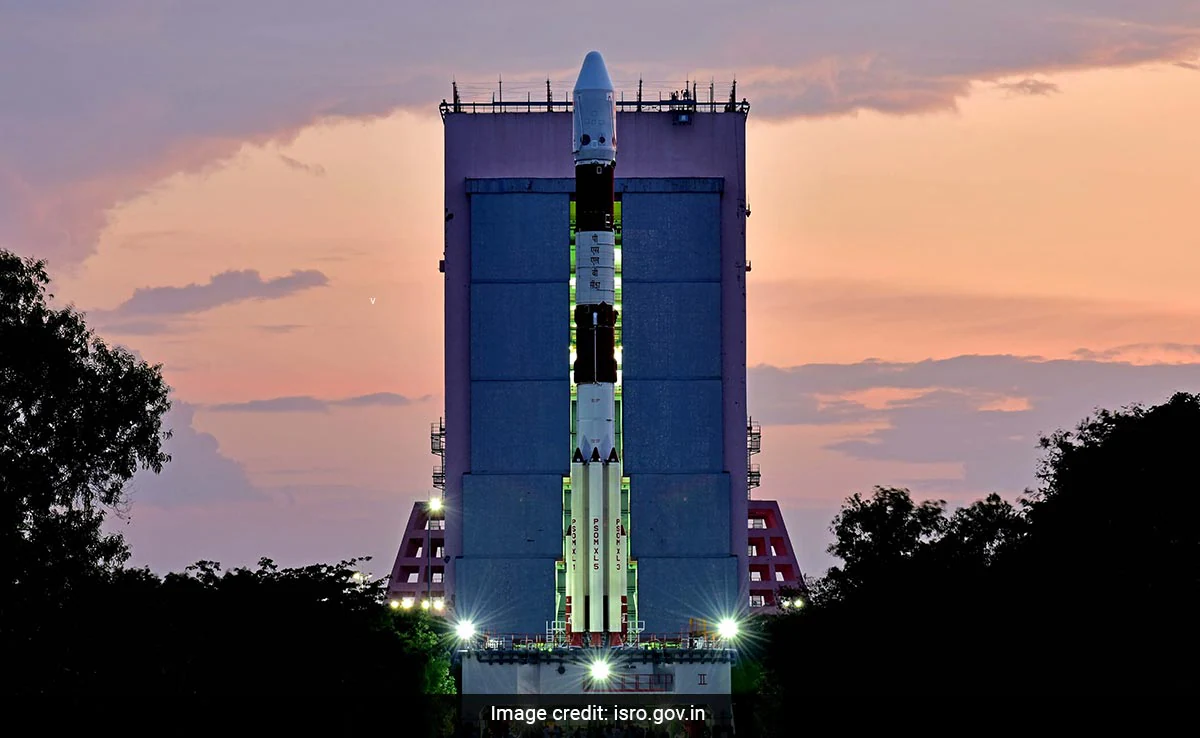India Achieves a Solar Breakthrough: Aditya L1 Begins Its First Mission to the Sun
India is on a roll in space! After making history by being the first to land near the Moon’s south pole, the country has now launched its first mission to observe the Sun. Incredible achievements in the sky
The spacecraft is set to cover a distance of 1.5 million km (932,000 miles) from Earth, which is just 1% of the Earth-Sun distance. India’s space agency anticipates that it will take approximately four months to reach this destination.
This groundbreaking mission, India’s first dedicated to studying the Sun, bears the name Aditya, honoring the Hindu god of the Sun, also known as Surya. The ‘L1’ designation represents Lagrange point 1, the precise location between the Sun and Earth where the Indian spacecraft is headed.
In accordance with the European Space Agency’s definition, a Lagrange point is a unique region where the gravitational forces of two massive celestial bodies, like the Sun and Earth, nullify each other, creating an ideal “hovering” location for spacecraft.
Once Aditya-L1 arrives at this strategic “parking spot,” it will be able to orbit the Sun at the same rate as Earth, requiring minimal fuel for its operation.
PSLV-C57/Aditya-L1 Mission:
The launch of Aditya-L1 by PSLV-C57 is accomplished successfully.
The vehicle has placed the satellite precisely into its intended orbit.
India’s first solar observatory has begun its journey to the destination of Sun-Earth L1 point.
— ISRO (@isro) September 2, 2023
ISRO’s Aditya-L1 Mission: The incredible minds at the Indian Space Research Organisation (ISRO) are gearing up to unveil their groundbreaking space-based solar mission Aditya L1, on the exhilarating date of September 2.
After the resounding triumph of India’s lunar conquest with Chandrayaan-3, the nation is now poised for a celestial voyage of epic proportions—this time, setting its sights on the blazing heart of our solar system, the Sun.
The visionary engineers and scientists at the Indian Space Research Organisation (ISRO) are primed for an extraordinary launch, heralding their inaugural space-based solar mission, Aditya L1. Mark your calendars for September 2, when this audacious mission will take flight at precisely 11:50 AM, soaring from the illustrious Sriharikota spaceport nestled in the heart of Andhra Pradesh.
In a statement that reverberated with anticipation, ISRO Chief S. Somanath announced, “Today marks the initiation of the countdown for the Aditya-L1 launch. We are on the brink of a historic launch. Both the rocket and satellite stand ready, having passed through rigorous rehearsals.”
Over on ISRO’s official X account, formerly known as Twitter, a fervent buzz erupted as the countdown clock began its inexorable descent toward this momentous launch, underscoring the excitement that pervades this monumental event.
PSLV-C57/Aditya-L1 Mission:
The 23-hour 40-minute countdown leading to the launch at 11:50 Hrs. IST on September 2, 2023, has commended today at 12:10 Hrs.The launch can be watched LIVE
on ISRO Website https://t.co/osrHMk7MZL
Facebook https://t.co/zugXQAYy1y
YouTube…— ISRO (@isro) September 1, 2023
Unlocking Mysteries of Space: The Latest Aditya L1 Mission Insights from India.
Aditya L1 will be stationed in a halo orbit encircling Lagrange point 1 (L1) within the Sun-Earth system, located approximately 1.5 million kilometers from Earth. Placing a satellite in this strategic halo orbit at the L1 point offers a significant advantage – it enables uninterrupted, continuous surveillance of the Sun, free from any occultation or eclipses.
This positioning grants Aditya L1 a unique edge, as it can constantly monitor solar activities and their real-time impact on space weather, delivering invaluable insights into our cosmic environment.
The payloads aboard Aditya L1 are anticipated to furnish pivotal data essential for comprehending the intricacies of several critical phenomena, including coronal heating, coronal mass ejections, pre-flare and flare activities, their distinguishing features, the dynamics of space weather, as well as the propagation of particles and fields.
India achieved a historic milestone on August 23 by becoming the first country to successfully land a spacecraft in the moon’s south pole region. This groundbreaking mission remains in progress, with ISRO (Indian Space Research Organisation) announcing that its rover has verified the presence of significant elements such as sulphur, iron, oxygen, and more on the lunar surface.
Here are some FAQ which you should know about Aditya L1

What is the Aditya L1 mission?
The Aditya L1 mission is a space-based solar mission of the Indian Space Research Organisation (ISRO). The primary objective of the mission is to investigate the Sun’s corona, the outermost layer of the Sun’s atmosphere. The spacecraft will be placed in a halo orbit around the Sun-Earth Lagrange point 1 (L1), which is a point about 1.5 million kilometers from Earth.
What Aditya L1 will Do?
The mission’s core objective is to unravel the intricate mechanisms behind coronal heating and the acceleration of solar wind.
* Study the dynamics of the solar corona and its interaction with the solar wind.
* Understand the initiation of coronal mass ejections (CMEs) and flares.
* The mission also entails a comprehensive study of the propagation of particles and fields within the interplanetary medium..
What Is the Budget of Aditya L-1 Mission?
The Aditya L1 mission stands as a significant undertaking led by the Indian Space Research Organisation (ISRO). Its primary focus revolves around the exploration of the Sun’s corona, which represents the Sun’s outermost atmospheric layer.
As reported by both the Timesnownews and the Tech Hindustan Times, the mission’s budget is estimated to be around 378 Crore INR (approximately US$50.7 million)
What are the main instruments on the Aditya L1 spacecraft?
* Visible Emission Line Coronagraph (VELC) is designed to capture images of the solar corona within the visible light spectrum.
* Solar Ultraviolet Imaging Telescope (SUIT): This instrument will image the solar corona in the ultraviolet light spectrum.
* Solar Low Energy X-ray Spectrometer (SoLEXS): This instrument will measure the solar corona’s X-ray emissions.
* High Energy L1 Orbiting X-ray Spectrometer (HEL1OS): This instrument will measure the solar corona’s high-energy X-ray emissions.
* In-situ Magnetic Field (IMF): This instrument will measure the magnetic field in the vicinity of the spacecraft.
* In-situ Electron Detector (IED): This instrument will measure the electron density and temperature in the vicinity of the spacecraft.
* In-situ Proton Detector (IPD): This instrument will measure the proton density and temperature in the vicinity of the spacecraft.
When Aditya L1 will Launch?
The Aditya L1 mission is scheduled to launch on September 2, 2023 at 11:50 AM (Local time), from the Satish Dhawan Space Centre in Sriharikota, India.
How long will the Aditya L1 mission last?
The Aditya L1 mission is expected to last for five years.
What are the benefits of the Aditya L1 mission?
The Aditya L1 mission is expected to provide valuable insights into the Sun’s corona, which is a poorly understood region of the Sun. The mission’s findings will help scientists to better understand the Sun’s magnetic field, solar wind, and space weather. This knowledge can be used to improve our ability to predict solar storms and other space weather events, which can have a significant impact on Earth’s technology and infrastructure.
I hope this answers your questions about the Aditya L1 mission. Kindly feel free to inquire if you have any additional questions.





One thought on “Aditya L1 Mission Updates: What you should know about India’s Sun Mission”